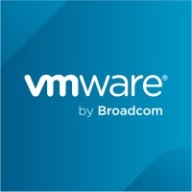

VMware Carbon Black Endpoint and Elastic Security are two leading endpoint security solutions. While Carbon Black users appreciate its feature set and support, Elastic Security stands out for its comprehensive security capabilities, making it a strong contender despite any differences in user preferences.
Features: VMware Carbon Black Endpoint users highlight advanced threat hunting, customizable policies, and competitive setup costs as valuable features. Elastic Security users praise its powerful search capabilities, seamless integration with Elasticsearch, and extensive features such as real-time monitoring.
Room for Improvement: Users suggest VMware Carbon Black Endpoint could improve in areas such as performance optimization, user training resources, and reducing false positives. Elastic Security users note that better documentation, more intuitive configurations, and enhanced scalability are desired.
Ease of Deployment and Customer Service: VMware Carbon Black Endpoint is commended for a straightforward deployment process and responsive customer service. Elastic Security, while slightly more complex to deploy, benefits from detailed initial setup support and robust customer service.
Pricing and ROI: VMware Carbon Black Endpoint users find value in the competitive setup costs and favorable ROI, often feeling the investment is justified by the performance. Elastic Security users indicate a higher initial setup cost but praise the ROI due to the extensive features and capabilities. Elastic Security's higher cost is balanced by its robust feature set, offering substantial long-term value.
It does not require hefty security budgets and can be deployed for enterprise security effectively.
Providing necessary assistance efficiently.
Most of the time when my team encounters issues, they receive responses within 24 hours.
It allows us to think about specific use cases, such as gathering malicious IPs in a single view and analyzing threats based on geolocation.
In terms of stability, I would rate Elastic a solid eight out of ten.
CrowdStrike and Defender have more established threat intelligence integration due to having a larger client base.
My security testing team continuously reports vulnerabilities, and we have to fix and update the versions frequently.
Elastic Security consumes a lot of resources, requiring a substantial deployment setup.
The pricing is reasonable, especially for Small Medium Enterprises (SMEs), making it a viable option for businesses building their security infrastructure.
This is beneficial for SMEs as they do not need extensive budgets for security solutions.
Elastic Security is considered cost-effective, especially at lower EPS levels.
The platform provides more visibility and requires less effort in monitoring.
Elastic Security is as flexible and configurable as Microsoft Sentinel.
We require rapid processing speed for alerts and event data, and Elastic Security is very efficient at handling this level of data.
| Product | Market Share (%) |
|---|---|
| Elastic Security | 2.4% |
| VMware Carbon Black Endpoint | 1.8% |
| Other | 95.8% |


| Company Size | Count |
|---|---|
| Small Business | 40 |
| Midsize Enterprise | 11 |
| Large Enterprise | 14 |
| Company Size | Count |
|---|---|
| Small Business | 31 |
| Midsize Enterprise | 9 |
| Large Enterprise | 30 |
Elastic Security combines the features of a security information and event management (SIEM) system with endpoint protection, allowing organizations to detect, investigate, and respond to threats in real time. This unified approach helps reduce complexity and improve the efficiency of security operations.
Additional offerings and benefits:
Finally, Elastic Security benefits from a global community of users who contribute to its threat intelligence, helping to enhance its detection capabilities. This collaborative approach ensures that the solution remains on the cutting edge of cybersecurity, with up-to-date information on the latest threats and vulnerabilities.
VMware Carbon Black Endpoint enhances endpoint security with its robust EDR, threat detection, and live response features. The cloud-based architecture supports remote management and easy setup while behavioral monitoring and dynamic grouping minimize security risks.
VMware Carbon Black Endpoint is designed for those seeking comprehensive endpoint protection. With its cloud-based deployment, organizations experience streamlined remote control and simplified rollout processes. Its behavioral monitoring, incident response capabilities, and firewall integration deliver advanced security measures. Although it addresses many security challenges, areas like manual alert management, on-demand scanning, and integration with systems like AlienVault USM require refinement. Improved UI, EDR components, and flexible pricing models would enhance user satisfaction. On-premise deployment infrastructure and compatibility issues with some operating systems need attention. Enhanced reporting, container security, and multi-tenancy support are also essential for fulfilling industry needs. AI-driven analysis and threat isolation empower companies by fostering proactive management.
What are the key features of VMware Carbon Black Endpoint?
What benefits should users look for when evaluating VMware Carbon Black Endpoint?
VMware Carbon Black Endpoint finds extensive application in industries focused on stringent security requirements. Managed security service providers leverage its capabilities to deliver comprehensive protection to multiple clients worldwide. Organizations use it primarily for antivirus protection and incident management, integrating it with their existing security frameworks to strengthen endpoint visibility and real-time threat prevention. Its advanced detection and application control features make it a preferred choice in industries that prioritize robust security measures. However, it requires improvements in terms of system compatibility and customization flexibility to better serve diverse industry environments.
We monitor all Endpoint Detection and Response (EDR) reviews to prevent fraudulent reviews and keep review quality high. We do not post reviews by company employees or direct competitors. We validate each review for authenticity via cross-reference with LinkedIn, and personal follow-up with the reviewer when necessary.